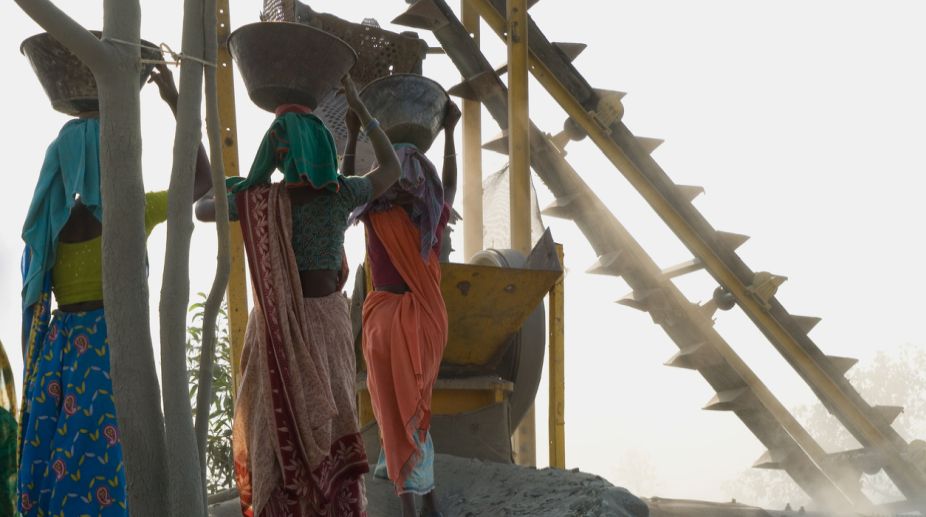Let new India arise out of the peasants cottage, grasping the plough, out of huts, cobbler and sweeper.
~ Swami Vivekananda
Advertisement
The village has for long been viewed as a convenient entry-point for understanding Indian society. At the beginning of the 20th century Mahatma Gandhi had emphatically declared: “The soul of India lives in its villages”.
In his reckoning, the village represented ‘authenticity’, for Jawaharlal Nehru it was centre of backwardness, and for B R Ambedkar the village was a place of oppression where the institution of caste presented itself in its most brutal and inhuman form. Notwithstanding their differences on the nature of the Indian village, there are many ways in which the three great visionaries seemed to agree. ‘Village’, for them, represented the real India.
Indeed, the Indian village had a pan-Indian structure. Even after 70 years of Independence, in the wake of urbanisation, villages are at the core of the economy, society and politics. Professional sociologists and social anthropologists regard a village as India in microcosm, ‘an invaluable observation centre’ where one examines the ‘real’ India, its social organisation and cultural life. By studying a village, one can generalise on the social processes and problems that are witnessed in large parts of the country.
In terms of statistics, more than 70 per cent of the country’s population live in villages. The majority are extremely poor and dependent on manual labour. They are directly dependent on agriculture. Since Independence, peasant societies have emerged with four core features ~ the family is the basic unit of production and consumption; land husbandry is the major source of livelihood; a distinct traditional culture is linked to the community; and an elite group dominates over the peasantry.
As in every other country, the poor villagers have been subjected to gross exploitation, but over the years they have evolved a strategy which has enabled them to survive a variety of predators. Villagers are silent but not without ideas, who remain uneducated but are politically literate and increasingly aware of their citizenship rights. Given an opportunity, a village has the potential to be rich… socially, scientifically, economically and environmentally. Mahatma Gandhi was the ideologue of the village.
Though he was not born in a village and did not even have ‘an ancestral village’ to identify with, he was preoccupied with the concept since his days in South Africa. He toured the villages extensively and much of his social and political philosophy revolved around the idea of the village. He celebrated the village life as no one else did.
A champion of participatory democracy and grassroots development, Gandhi believed that making villages self-contained and sustainable was the first step towards empowering India. He visualised self-reliant villages and wanted to ensure that every village is organically linked to the larger spatial bodies. They must have the freedom to decide on the affairs of the particular area.
He wanted political power to be distributed among the villagers for building the structure of pure democracy ‘inch by inch’ directly from below. He preferred the term Swaraj (Self-Rule) to describe what he called true democracy where people’s power rests on the individuals and each one realises that he or she is the real master of one’s self.
However, Gandhi could not rest by merely formulating his ideas on rural reconstruction. Beginning with his visit to Champaran in 1917, he tried to practise the same. He settled in a village called Segaon (later renamed as Sevagram near Wardha) and successfully implemented on an experimental basis his ideas on rural reconstruction. The idea of alternative India, more precisely rural reconstruction, has been best spelt out by Gandhi himself in Harijan (1942). He wrote: “My idea of village swaraj is that it is a complete republic, independent of its neighbours for its own vital wants, and yet interdependent for many others in which dependence is a necessity.” For the benefit of members of the Congress, Gandhi first presented a concrete programme in the form of a booklet in 1942, which was further revised by him in 1945.
Even on 29 January 1948, the day before his assassination, he advised the Congress in his ‘Last Will and Testament’ to go into voluntary liquidation and asked Congressmen to devote themselves wholly to the education and organisation of the masses for Swaraj. In the system that he contemplated, the individual is at the centre and the village, and the group of villages encompassing each other in concentric circles, In the structure composed of innumerable villages, there will be ever-widening, never-ascending circles (‘Oceanic Circle’). Life will not be a pyramid with the apex sustained by the bottom.
The individual will rise to the occasion and be prepared to sacrifice everything for the cause of his/ her village. Gandhi emphatically said: “Under such a decentralised structure governing rural India, the outermost circumference will not wield power to crush the inner circle, but will give strength to all within and derive its own strength from it.
If there ever is to be a republic of every village in India, then I claim verity for my picture in which the last is equal to the first, or in other words, no one is to be the first and none the last.’ (Harijan, 28 July 1946). Gandhi was explicitly antiutilitarian. In his opinion, the doctrine of utility sacrifices the interests of the minority in order to promote the greatest good of the greatest number. Fundamental to the Gandhian social and political thought is the contention that true freedom can be ensured in human society only by the greatest good of all.
Every individual represents an end-initself, and the curtailment of freedom of a minority of individuals leads to a qualitative deterioration of the freedom of the whole society. To such a concept of universal freedom, Gandhi gives the name of Sarvodaya (the rise of all), a Sanskrit word used by him as the title for his Gujarati translation of Ruskin’s Unto This Last. He believed that Sarvodaya involves the promotion of the greatest good of all. Gandhi’s dream of establishing an ideal non-violent sociopolitical and economic order assures the participation of the masses in the discussion of their own affairs through the three levels of the Panchayat Raj system.
He advocated decisions by consensus as the main thrust of democratic functioning. His concept of consensus does not mean that there should not be two opinions on an issue or that people must think identically. It envisages the resolution of all differences so that the minutest may not feel ignored or tyrannised. Gandhi’s concept of rural development envisages the creation of model villages for transforming ‘Swaraj’ (self-rule) into ‘Su-raj’ (good governance). As part of the scheme, the villagers will prepare their own development agenda, plan activities and fix targets for achievement.
He visualised his model village as: ‘An ideal Indian village will be so constructed as to lend itself to perfect sanitation. It will have cottages with sufficient light and ventilation built of material obtainable within a radius of five miles of it.
The village lanes and streets will be free of all avoidable dust. It will have wells according to its needs and accessible to all. It will have houses of worship for all, also a common meeting place, a village common for grazing its cattle, a cooperative dairy, primary and secondary schools in which industrial education will be the central fact, and it will have panchayats for settling disputes. It will produce its own grains, vegetables and fruit, and its own khadi.
This is roughly my idea of a model village.’ (Harijan, 9 January1937). More than seven decades have passed since Mahatma Gandhi framed his constructive programme and successive governments have also undertaken programmes for socio-economic development in rural areas. But the lack of spatial planning and convergence of various schemes programmes have unfortunately not yielded the desired impact.
A major reason for the failure is that our development model has been supply-driven. Gandhi had recommended a demand-driven model. There should be an urge towards that end within the village itself.
(The writer is a retired IAS officer)











